The Truth About Lyme Disease You Need To Know

In recent years, Lyme disease has become a popular topic of debate in the medical community. On one side, we have the conventional medical view that the disease can be narrowly defined and easily treated.
On the other side, in the alternative health world, there is recognition of the complexity of the disease and an equally complex array of treatment protocols.
While this divide in our healthcare system isn’t newsworthy, it makes Lyme disease an extremely confusing and frustrating diagnosis.
As scary as hearing this diagnosis may be, you now have proof that your seemingly unrelated collection of symptoms and declining health have a root cause. Getting the diagnosis is half the battle. Once you have it, you can begin to sift through the emerging science and treatments that are being developed to successfully combat this disease.
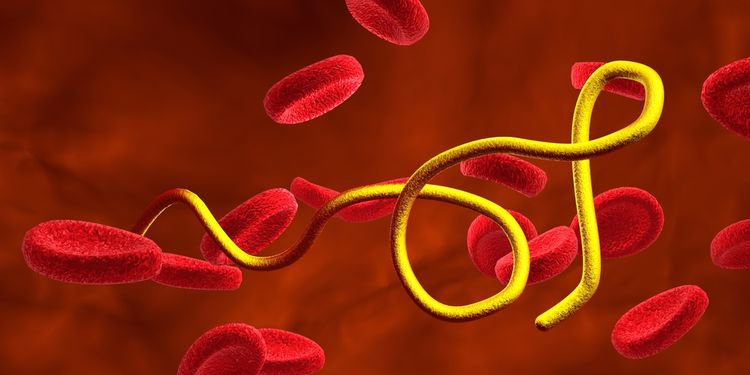
What Exactly is Lyme Disease?
Lyme disease is an illness resulting from a Borrelia bacterial infection and is sometimes referred to as borreliosis. In the U.S. the most common strain is Borrelia burgdorferi, which is transmitted by infected insects including ticks, mosquitoes, spiders, and mites. There is also a possibility that B. burgdorferi can be sexually transmitted.
According to the Center for Disease Control (CDC), Lyme disease is the fastest-growing and most common vector-borne illness in the U.S. The incidence of Lyme disease in the U.S. climbed from about 18,000 reported cases in 2001 to about 35,000 reported and probable cases in 2013.1
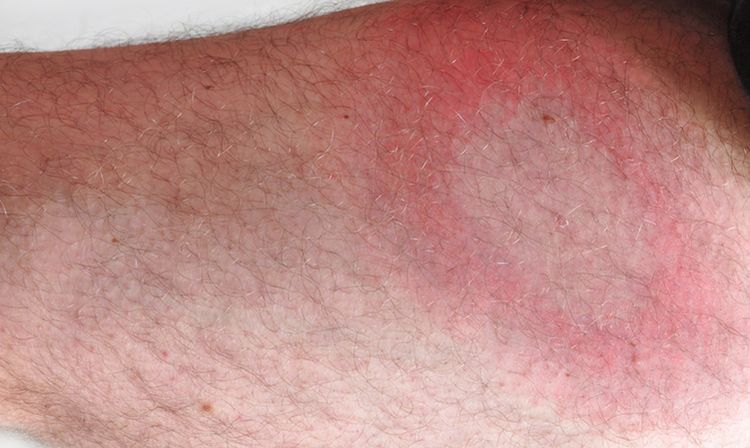
Diagnosing Lyme Disease
Lyme disease is a clinical diagnosis that takes into consideration:
- History of exposure to ticks (hiking, camping, spending time in heavily wooded areas, particularly in the northeastern and midwestern U.S.)
- Acute symptoms including:
- Erythema Migrans (EM) rash commonly referred to as the “bulls-eye rash.”
- Flu-like symptoms with stiff neck, headache, muscle pain/cramps, fever, chills, fatigue, disorientation, memory problems, enlarged lymph nodes, and swollen painful joints.
The conventional lab tests for Lyme disease are two-tiered, meaning that there must be a positive result on the first screening test in order to confirm infection with the second, more specific test.
First Tier: The Enzyme Linked Immunosorbent Assay (ELISA), or Immunofluorescence Assay (IFA) detects the immune response to B. Burgdorferi from a blood sample.
Second Tier: The Western Blot test detects characteristic proteins of antibodies produced in the blood in response to specific antigens or identifying molecules of B. burgdorferi.
Although it’s common to make the Lyme diagnosis without lab tests, it’s also common for doctors to rule out the disease with a negative first tier test result.

There are some problems with the conventional method of diagnosing Lyme disease.
It’s a common misconception that the EM rash must always be present in acute infection. The EM rash also may not take the classic “bulls-eye” pattern. The International Lyme and Associated Diseases Society (ILADS) reports that fewer than 50% of Lyme cases present with the EM rash.2
The clinical manifestations of Lyme can vary among different people depending on susceptibility and tick-borne co-infections. This results in drastically different clinical pictures for the same B. burgdorferi infection. Some people may have more exaggerated joint pain and fatigue while others may only have neurological symptoms.
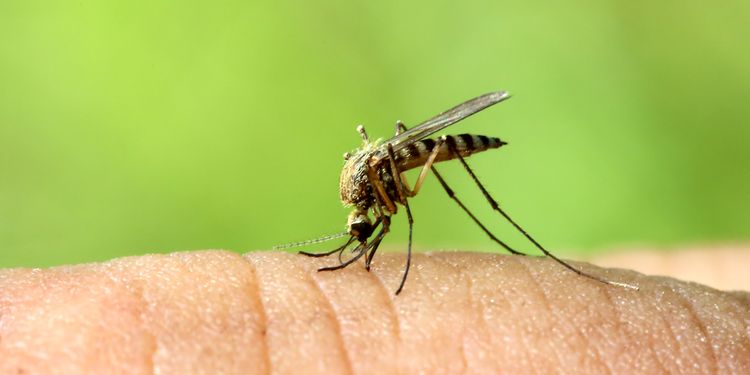
Lyme disease is rarely considered in areas that do not have a dense population of ticks or reported cases of Lyme disease. However, there may be more than one vector contributing to the climbing number of reported and probable Lyme cases, such as mosquitoes.
There also may be more Lyme cases than are reflected by the CDC values due to misdiagnosis as well as the strict definition used to qualify a reportable case.
These factors contribute to misdiagnosed B. burgdorferi infections, which may result in a worse infection over time.

Even if Lyme disease is suspected, the conventional laboratory tests for B. burgdorferi may also be unreliable.
The lab tests are often used to rule out Lyme disease despite the fact that they commonly yield false negatives. According to ILADS, the first tier ELISA and IFA tests may yield a false negative up to 35% of the time.2 This may be attributed to the fact that:
- B. burgdorferi suppresses the immune system. Since the ELISA and IFA tests are dependent on the immune response to the bacteria, the signal of the response may be too low to achieve a positive result, even if there is an active infection. The longer the bacteria is in the body, the more suppressed the immune system becomes.
- The test is not sensitive enough to begin with. The test examines the immune response to an entire bacterial cell, rather than the specific antigens that trigger the immune system.
Although the Western Blot test is more sensitive, it is not ordered unless the first round of testing yields a positive result. In addition, the CDC has strict criteria on what constitutes a positive Western Blot test result. Even though this criteria is not meant to be used in clinical diagnosis, it is common for Lyme disease to be ruled out according to these criteria.

How Does Lyme Disease Occur?
Once transmitted to a human host by the bite of an infected tick, B. burgdorferi can change its form depending on the internal conditions of its host. The forms include:
Spirochete: This is the classic form of B. burgdorferi that is implicated in acute infection. In this form, the bacteria takes on a spiral shape and is able to drill itself into body tissues.
Cell-wall deficient: This is a less recognized form of the bacteria that lacks a cell wall. This form is recognized as a major contributing factor in chronic Lyme disease cases, as this form is deposited deep within body tissues. This form can also cause intracellular infection, prompting immune system confusion and cell death.
Cyst: This form is a dormant form of the bacteria in which the bacteria may be able to proliferate and re-emerge in either of the other two forms in more favorable conditions. In this form, the bacteria is resistant to antibiotics and is asymptomatic. This form may contribute to relapsing Lyme disease.
The existence of these different forms of B. burgdorferi may explain why in some cases short courses of individual classes of antibiotics do not successfully kill the infection and why Lyme is so difficult to identify and treat.

Symptoms of Lyme Disease
Because B. burgdorferi can easily morph from one form to another, the bacteria can affect many systems in the body while confusing and evading the body’s immune response.
Acute effects of Lyme disease may include migrating muscle and joint pain, extreme fatigue, dizziness and vertigo, cognitive deficits, mood swings, coordination issues, cyclical flu-like symptoms, and acute systemic inflammation.
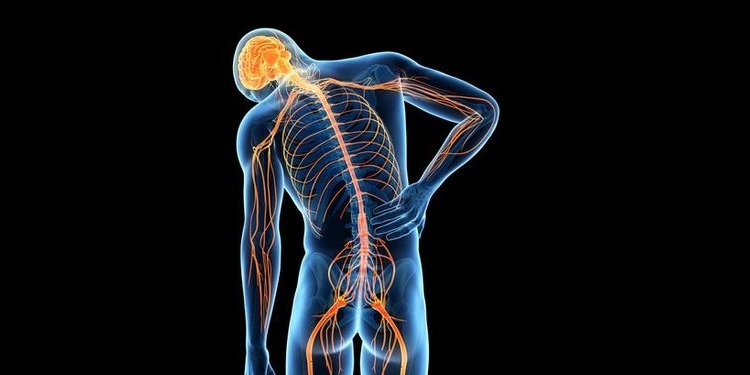
As Lyme disease becomes chronic, inflammation also becomes chronic.
The constant flood of inflammatory cytokines can have a wide range of deleterious effects on the body. The bacteria can cause inflammation in the brain and central nervous system, resulting in neurological symptoms such as anxiety, depression, cognitive difficulties, memory problems, and neuropathies (weakness, numbness, or pain in nerves).
There can also be inflammation of the blood vessels greatly decreasing blood flow to the brain. Infection in the joints leads to severe arthritic pain.
Major organs, including the skin, liver, and kidneys may also become compromised by the bacteria directly and indirectly from the systemic inflammation.
The bacteria also produce neurotoxins which contribute to the intensity of neuronal tissue damage and inflammation in the brain and nervous system.
The longer B. burgdorferi is active in the body, the more dysfunction in the host’s immune system. This could be attributed to the chronic inflammation in conjunction with B. burgdorferi defense strategies to evade the immune system.
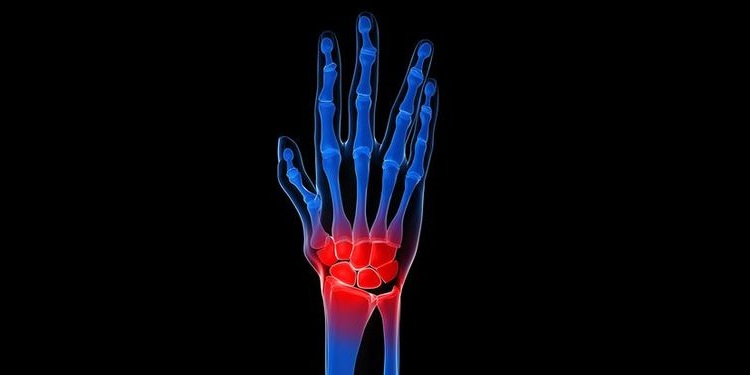
Due to the high levels of inflammatory cytokines and disruption of a properly functioning immune system, it isn’t surprising that Lyme disease can mimic or cause symptoms that are similar to many common autoimmune disorders. These disorders include Chronic Fatigue Syndrome, Multiple Sclerosis (MS), Crohn’s disease, Lupus, and rheumatoid arthritis.
Lyme may also trigger true autoimmunity. B. Burgdorferi can adopt characteristic glycoproteins similar to the glycoproteins on cell membranes of healthy cells, which makes it hard for the immune system to distinguish between healthy tissue and bacterial cells.
Infection can also contribute to intestinal permeability or leaky gut, which is a precursor for developing autoimmune diseases.
According to Richard Horowitz, MD, an expert in the fields of Lyme and chronic disease, research shows that Lyme disease may not just mimic MS, but there is enough evidence to say that it is causative. A critical finding that supports this claim is that the immune system has a difficult time distinguishing between the B. burgdorferi flagellum and human myelin, the material of the nerve cells that is targeted in MS.
Lyme disease can also be an underlying cause or trigger for several other disorders, such as depression, anxiety, hypo/hyperthyroidism, autism, amyotrophic lateral sclerosis (ALS), Parkinson’s disease, irritable bowel syndrome, and Alzheimer’s disease.

Types of Lyme Disease
Lyme disease can be characterized by length of infection and is often broken down into stages:
Early Localized: This stage of the disease is within the first couple of weeks of being bitten by a tick
A classic sign of being in this stage of the disease is an Erythema Migrans (EM) rash, more commonly referred to as a “bulls-eye” rash. However, according to the International Lyme and Associated Diseases Society (ILADS), less than 50% of patients report having an identifiable EM rash.2 It’s more common in this phase to present with flu-like symptoms.
Early Disseminated: In this stage, the B. burgdorferi begin to proliferate and spread in the blood to begin affecting other parts of the body. During this phase, symptoms appear systemically and include but are not limited to flu-like symptoms, fatigue, muscle spasms and pain, neurological dysfunction, and joint swelling.
Late Disseminated: In this stage, there is a worsening and/or persistence of many of the symptoms that begin in early disseminated Lyme disease. It is common in this stage for entire organ systems to become affected, such as the central nervous system, liver, heart, and kidneys, resulting in an even wider range of symptoms and overall immune system dysfunction
The timing of medical intervention in Lyme disease is crucial to a full recovery. The earlier the intervention, the more likely the remission of symptoms and a full recovery.

A fourth classification exists for a large population (20%) of Lyme disease sufferers who don’t make a full recovery after the conventional antibiotic treatment.1
There’s an ongoing debate over whether or not recurring, relapsing, or persistent symptoms of Lyme disease are caused by an active B. burgdorferi infection.
Ongoing symptoms classified as chronic Lyme disease support the theory that the unrelenting symptoms are caused by an active B. burgdorferi infection or co-infections.
The International Lyme and Associated Diseases Society (ILADS) supports this ideology and cites research to support this theory. Treatment usually involves longer courses of multiple types of antibiotics to address all three forms of the B. burgdorferi bacteria and suspected co-infections.
Ongoing symptoms classified as post-treatment Lyme disease attribute lingering or relapsing symptoms to an acquired generalized autoimmune disorder. This theory is supported by the CDC and the Infectious Disease Society of America (IDSA); they advise against the use of long-term antibiotic protocols to eradicate symptoms.

Triggers of Lyme Disease
Since Lyme disease increases systemic inflammation, suppresses immune function, and may affect the major organs of the body, many different triggers should be considered in managing Lyme symptoms:
Inflammatory Foods: Foods that contribute to inflammation can cause a worsening of symptoms due to the already high level of inflammation as a result of the infection. Common inflammatory foods are gluten, dairy, sugar, and other foods an individual may be sensitive to.
Environmental Toxins: B. burgdorferi can produce neurotoxins that contribute to the body’s toxic load. The bacteria can also affect the liver, hindering its ability to process toxins. Therefore, environmental toxins such as heavy metals, mold, chemicals, and pollution can cause a worsening of symptoms.

Alcohol/Drug Use: Lyme disease affects the liver’s ability to process alcohol and break down toxins. Drinking alcohol and using drugs adds to the toxic burden of the body and inhibits liver function, which leads to the recirculation of B. burgdorferi biotoxins (among other toxins).
Acute and Chronic Stress: In cases of chronic infection, it is common to also have chronically high levels of cortisol, the stress hormone. This lowers stress tolerance and increases sensitivity to acute and chronic stressors. It may also lead to cortisol resistance. Chronic stress can suppress the function of an already taxed immune system, allowing the bacteria to prosper.
Improper Sleep: Immune function is dependent on adherence to healthy circadian rhythms. Research supports that sleep loss or deprivation raises levels of c-reactive protein, an important marker of systemic inflammation that is immunosuppressive.3

Root Causes of Lyme Disease
There are several different theories behind why many people with a B. burgdorferi infection have persistent or relapsing symptoms. Contributing factors may include:
- A genetic predisposition to the accumulation of biotoxins (chronic inflammatory response syndrome)
- Co-infections
- Opportunistic infections/pathogens
- Alteration of the gut microbiome
- Bacterial defense mechanisms

Root Cause of Lyme Disease: Genetic Predisposition
About 25% of the population have a genetic profile that makes them more susceptible to the effects of Lyme disease.
The Human Leukocyte Antigen (HLA) genes encode for proteins involved in the adaptive immune response.
The production of these proteins is important for the immune system to recognize the difference between foreign and healthy tissue. Furthermore, they are involved in eliminating foreign tissues or toxins.

Dr. Richard Shoemaker, MD, is known for his research of the phenomenon that he refers to as biotoxin illness and the resulting syndrome, chronic inflammatory response syndrome (CIRS).
His research shows that in people with particular HLA-DR gene mutations, expressed primarily in B-cells and macrophages, the appropriate immune response to toxins produced by infectious organisms is absent or insufficient. The detoxification of these toxins is also impaired, resulting in a chronic circulation of toxins and inflammatory response, even in the absence of an active infection.

It’s curious that a similar percentage of people diagnosed with Lyme disease (20%) also have lingering Lyme symptoms.1
Exposures to other environmental biotoxins from agents other than B. burgdorferi may also make people with HLA-DR gene mutations more susceptible to the effects of Lyme disease, such as:
- Mold or other fungi
- Bacteria
- Mycobacteria
- Cyanobacteria (Blue/green algae)
- Tick-borne co-infections (Anaplasma/Ehrlichia, Bartonella, Babesia, and Mycoplasma)
- Microbial volatile organic compounds (mVOCs), by-products of fungi/bacteria metabolism
All of the above agents produce toxins that may contribute to a toxin overload and chronic inflammatory response in HLA-DR-susceptible individuals.

Root Cause of Lyme Disease: Co-infections
Relapsing or persistent symptoms can also be attributed to other tick-borne pathogens that can go undiagnosed and cause overlapping or increased severity of Lyme symptoms.
Common co-infections associated with Lyme disease include:
- Bartonella
- Ehrlichia/Anaplasma
- Mycoplasma
- Babesia (a parasitic single-celled organism)
- Rickettsia
- Chlamydia (not shown to be tick-borne, but is common in patients with multiple tick-borne infections)
- Borrelia (strains different from B. burgdorferi including B. afzelii and B. garinii)
- Tick-borne viral infections
Patients can oftentimes have one or more of the above co-infections that may require specific interventions. The co-infections may also exacerbate the chronic inflammatory response syndrome by contributing more biotoxins to the total toxic load.

Root Cause of Lyme Disease: Opportunistic Infections
A suppressed immune system in conjunction with antibiotic use is ideal for opportunistic organisms such as yeast and fungi.
When functioning properly, the immune system along with beneficial gut bacteria are able to control the growth of yeast and fungi in the gastrointestinal (GI) tract.
When the immune system is suppressed and the beneficial bacteria are killed along with the bad bacteria, the yeasts such as candida are able to grow freely.
When these species become overgrown in the human GI tract, they can cause digestive problems, brain fog, skin rashes, acne, fatigue, weight gain, and hormonal imbalances.
Many symptoms of a yeast or fungal infection overlap with Lyme disease symptoms and may contribute to residual symptoms.
Latent, non-tick-borne viral infections may also become problematic when the immune system is suppressed. Viruses like Epstein-Barr and Human Herpesvirus 6 (HHV-6) are two common human viruses that have the potential to be reactivated in cases of prolonged immunosuppression. Autoimmune processes triggered by Lyme disease may also be triggered by these reactivated viruses, resulting in more overlapping symptoms.8,9

The overgrowth of yeast, fungus, and bad bacteria that can result from antibiotic use results in gut dysbiosis, or imbalance of good and bad inhabitants. The resulting gut dysbiosis itself becomes a root cause of persisting Lyme symptoms for multiple reasons:
- Overgrowth of the wrong bacteria and yeast or fungi may contribute to intestinal permeability or leaky gut. The permeability allows undigested food proteins into the bloodstream, fueling the pro-inflammatory cascade that is already in full force by initiating an immune response to these proteins.
- Gut bacteria can control the inflammatory response by inducing the production of pro-inflammatory cytokines as well as anti-inflammatory cytokines. Overgrowth of bad bacteria encourages the production of pro-inflammatory cytokines.
- About 70% of the immune system resides in the gut. Regulation of the immune system is intricately related to the types of bacteria it interacts with in the GI tract.
- The gut has its own nervous system. Known as the Enteric Nervous System (ENS), this system is composed of nerves and neurotransmitters that can influence the central nervous system. This interaction is evident in the connection between gut dysbiosis and psychiatric disorders such as anxiety and depression.10 Since Lyme disease also affects the nervous system, the altered gut-nervous system interaction can mimic Lyme disease symptoms. This alteration of the ENS may also trigger SIBO, or small intestinal bacterial overgrowth, by decreasing GI motility and allowing bacteria to relocate from the large intestine to the small intestine.
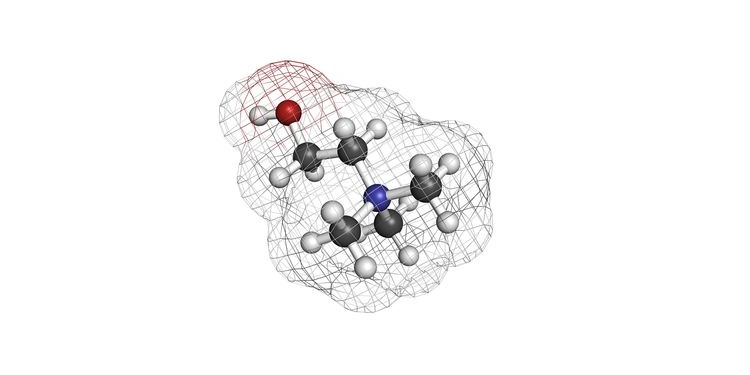
Root Cause of Lyme Disease: Bacterial Defense Mechanisms
To complicate matters, antibiotics may not be sufficient in eliminating Lyme disease. B. burgdorferi has evolved to evade the immune system and antibiotics by utilizing multiple mechanisms.
Biofilms: Biofilms contribute to the chronic nature of some bacterial infections.11 Biofilms are characterized by aggregates of bacteria, sometimes of multiple different species, in an extracellular polymeric substance (EPS) matrix. This matrix shields bacteria from the immune system as well as from antibiotics. Lyme bacteria has been shown to produce these biofilms in hostile environments in-vitro.12
Molecular mimicry: The bacterial cells adopt antigens that are similar to the molecules found on the surface of healthy human cell membranes, making it difficult for the immune system to distinguish between healthy cells and bacterial cells. The immune system may inadvertently attack the healthy cells because of this, giving rise to an autoimmune process.
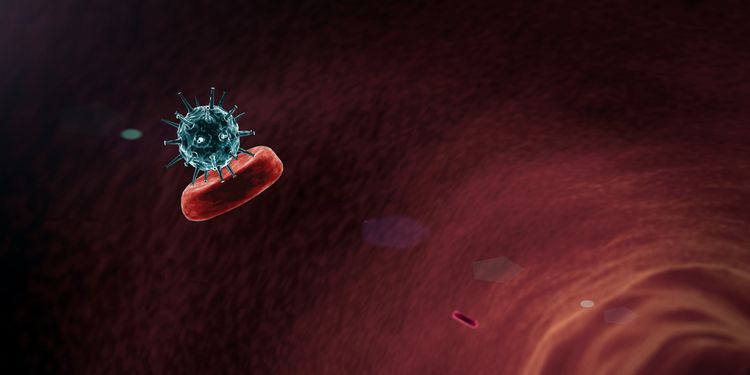
Blebs: Fragments of bacterial DNA, known as blebs, are free-floating or infect healthy cells that are consequently targeted by the immune system, resulting in cell death and more immune system confusion.
Intracellular infection: The cell wall-deficient forms of B. burgdorferi can hide inside of cells. When cell death occurs, the bacteria can also hide itself in components of the dead cell’s membrane.
Cyst formation: The cell wall-deficient form of B. burgdorferi has the ability to form an encapsulated cell form that is dormant in periods of hostile environments and is resistant to the immune system and antibiotics.

Natural Relief from Lyme Disease
There are many things you can do to mitigate Lyme symptoms, in addition to avoiding common triggers.
Adhering to an anti-inflammatory and reduced-carbohydrate diet may help decrease symptoms of inflammation and discourage the growth of B. burgdorferi and other opportunistic organisms such as pathogenic yeast and bacteria.
The type of anti-inflammatory diet followed can vary, but it usually increases nutrient-dense foods while removing refined foods. A good anti-inflammatory diet will be absent of common inflammatory foods such as gluten, dairy, and sugar as well as individual food sensitivities. Focusing on high quality, whole foods such as protein, fats, vegetables, and some fruit is important.
Anti-inflammatory supplements are also key to minimizing inflammation. These include but are not limited to turmeric, frankincense/boswellia, and omega 3 fatty acids EPA and DHA from cold-water fish. Omega 3 fatty acids may be especially helpful for neurological function.
Mitochondrial function may be impaired in cases of chronic infection by a degeneration of healthy mitochondrial membranes. NT Factor is often used in Lipid Replacement Therapy (LRT), or the replacement of damaged cell-membrane phospholipids and glycolipids. It is thought that these lipids, in conjunction with nutrients important for the production of ATP including Acetyl-L Carnitine, NADH, and Coenzyme Q10, improve mitochondrial function.
Detoxification support is crucial to managing Lyme symptoms. Lyme symptoms can result from the toxic overload that is placed on your body as a result of impaired liver function. Supplements can be taken such as reduced liposomal glutathione and milk thistle to support detoxification. Dr. Nicola McFadzean, ND, a specialist in the treatment of Lyme disease, recommends Chinese Sarsaparilla specifically for reducing the neurotoxins associated with Lyme disease since its compounds can bypass the blood-brain barrier.
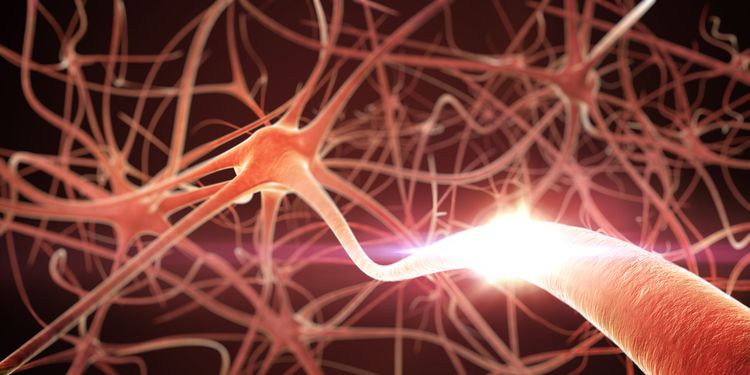
In Lyme disease management, the compromised regulatory mechanisms of the immune system and stress response must also be addressed.
Gamma aminobutyric acid (GABA), the brain’s principal inhibitory neurotransmitter, may help with symptoms of anxiety and insomnia while also modulating the immune response. Research has shown that GABA activity can control the inflammatory response by inhibiting the production of inflammatory cytokines.4
There is also research showing that GABAergic activity can interrupt the chronic activation of the Hypothalamic-Pituitary-Adrenal axis.5 This system is involved in regulating the stress response that can be compromised in Lyme disease due to chronically high levels of cortisol and inflammatory cytokines. Phenyl-GABA is thought to be the most successful form of supplemental GABA for its ability to bypass the blood-brain barrier; however, it may cause withdrawal symptoms following discontinuation.

Although low dose naltrexone (LDN) is a prescription medication commonly used to treat withdrawal symptoms in drug addiction cases, it can also be used in very small doses to increase the body’s production of endorphins.
It’s an opiate receptor antagonist, meaning it blocks the body’s opiate receptors. When used at low doses, the blockage is transient and initiates an upregulation of opiates. The increase in opiates then causes an increase in T- regulatory cells, the main modulator cells of the immune response.
There’s also evidence to suggest that LDN blocks the activation of microglial cells and the pro-inflammatory cascade that these cells initiate in the central nervous system.6 Chris Kresser, LAc. covers the use of LDN to treat various autoimmune diseases in his podcast “Revolution Health Radio.”

Addressing psychological issues that arise with having a chronic illness is also important in supporting a healing mindset—a vital component to recovery.
Stress reduction: Chronic stress can suppress the immune system and cause sleep disturbances, both of which contribute to Lyme disease symptoms.
Activities for stress reduction like meditation or mindfulness-based stress reduction (MBSR) are useful tools in managing stress and regulating cortisol rhythms. Chris Kresser, LAc recommends a program called Rest Assured, which is primarily for addressing insomnia by reducing daytime stress.
Psychological counseling: Anxiety, depression, obsessive-compulsive behavior, fear of triggers, and post-traumatic stress from illness onset may all be problematic in Lyme disease. Psychological counseling to address these issues may aid in escaping unhealthy thought patterns that reinforce the disease process.
An emerging therapy known as Emotional Freedom Technique (EFT) may be helpful, particularly for PTSD.7 This therapy combines cognitive behavioral therapy with activation of acupressure points to reframe intrusive thoughts or beliefs acquired from traumatic experiences.
Now that you’ve got a master’s level education on Lyme disease, you should have a game plan on testing options, as well as treatment planning. Use this information as a tool to take your health to where you want it to go.
